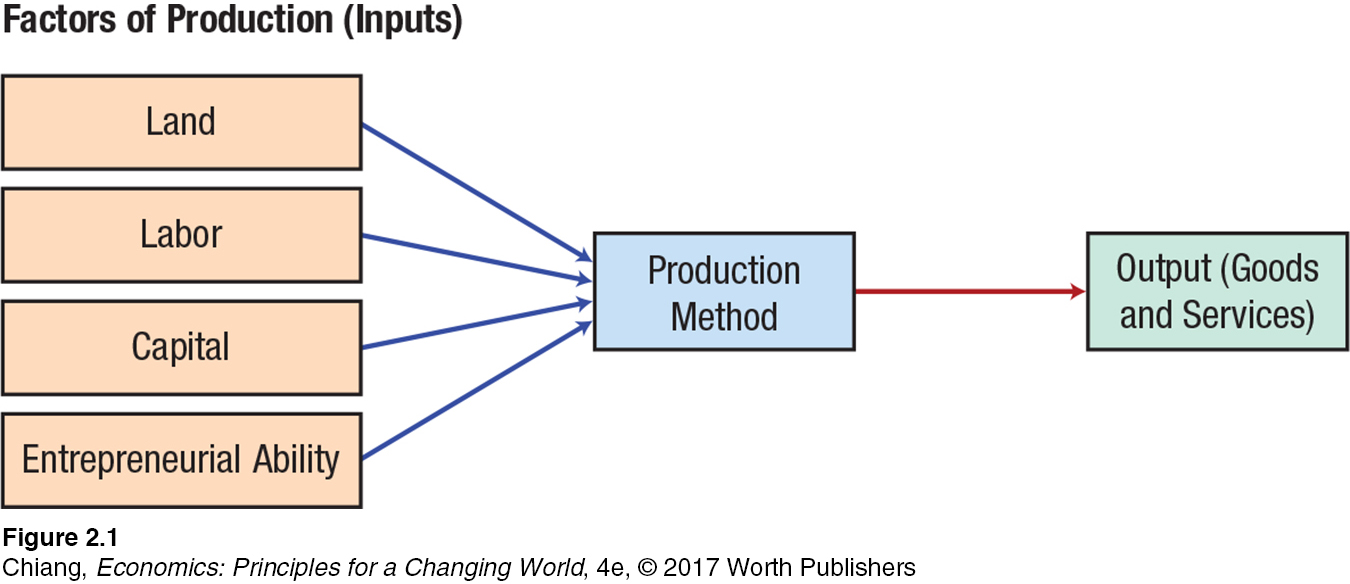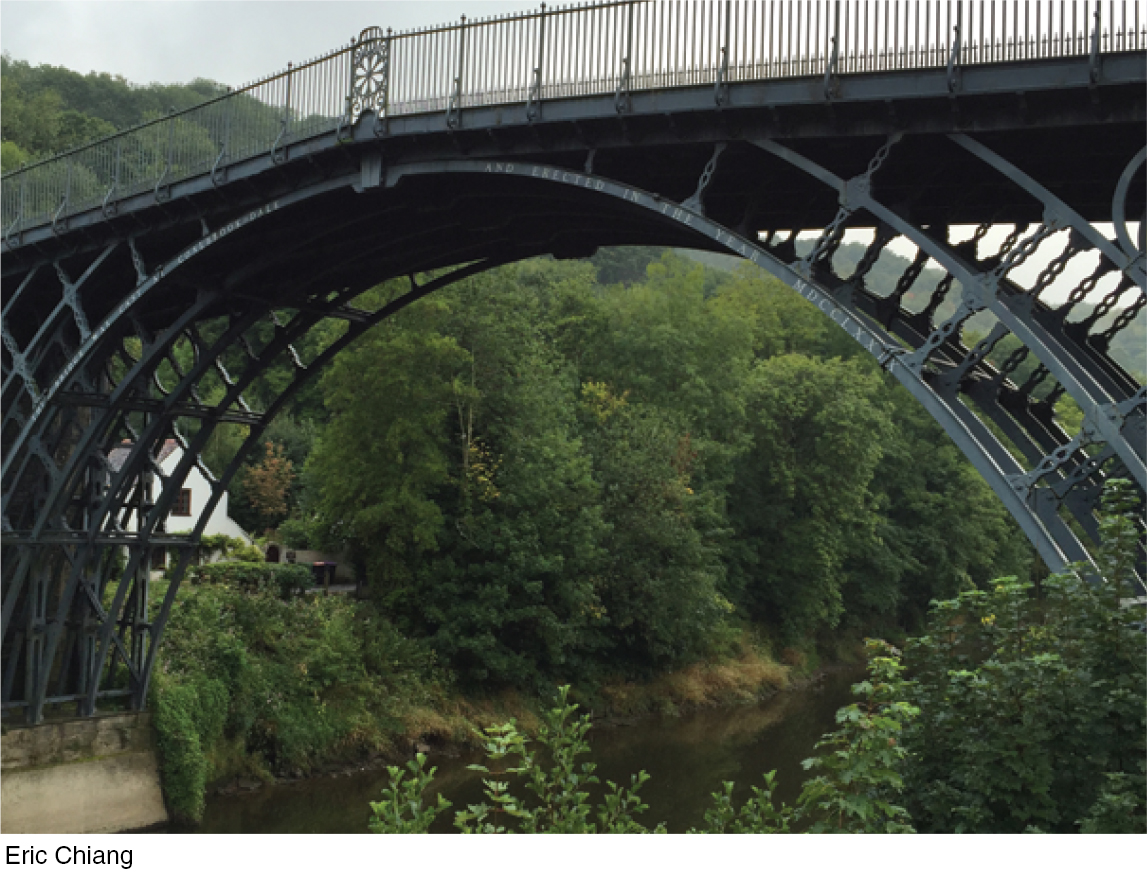BASIC ECONOMIC QUESTIONS AND PRODUCTION
Regardless of the country, its circumstances, or its precise economic structure, every economy must answer three basic questions.
Basic Economic Questions
The three basic economic questions that each society must answer are:
What goods and services are to be produced?
How are these goods and services to be produced?
Who will receive these goods and services?
The response an economy makes to the first question—
Once we know what goods a society wants, the next question its economic system must answer is, How are these goods and services to be produced? In the end, this problem comes down to the simple question of how land, labor, and capital should be combined to produce the desired products. If a society demands a huge amount of corn, for example, we can expect the use of its resources will be different from a society that demands digital equipment. But even an economy devoted to corn production could be organized in different ways, perhaps relying on extensive use of human labor, or perhaps relying on automated equipment.
Once an economy has determined what goods and services to produce and how to produce them, it is faced with the distribution question: Who will get the resulting products? Distribution refers to the way an economy allocates to consumers the goods and services it produces. How this is done depends on how the economy is organized.
Economic Systems All economies have to answer the three basic economic questions. How that is done depends on who owns the factors of production (land, labor, capital, and entrepreneurship) and how decisions are made to coordinate production and distribution.
In capitalist or market economies, private individuals and firms own most of the resources. The what, how, and who decisions are determined by individual desires for products and profit-
In contrast, planned economies (socialist and communist) are systems in which most of the productive resources are owned by the state and most economic decisions are made by central governments. Big sweeping decisions for the economy, often called “five-
33
Resources and Production
production The process of converting resources (factors of production)—land, labor, capital, and entrepreneurial ability—
resources Productive resources include land (land and natural resources), labor (mental and physical talents of people), capital (manufactured products used to produce other products), and entrepreneurial ability (the combining of the other factors to produce products and assume the risk of the business).
land Includes natural resources such as mineral deposits, oil, natural gas, water, and land in the usual sense of the word. The payment for land used as a resource is rent.
Having examined the three basic economic questions, let’s take a look at the production process. Production involves turning resources into products and services that people want. Let’s begin our discussion of this process by examining the scarce resources used to produce goods and services.
Land For economists, the term land includes both land in the usual sense as well as all other natural resources that are used in production. Natural resources such as mineral deposits, oil and natural gas, and water are all included by economists in the definition of land. Economists refer to the payment to land as rent.
labor Includes the mental and physical talents of individuals who produce products and services. The payment to labor is wages.
capital Includes manufactured products such as tractors, welding equipment, and computers that are used to produce other goods and services. The payment for capital is interest.
entrepreneurs Entrepreneurs combine land, labor, and capital to produce goods and services. They absorb the risk of being in business, including the risk of bankruptcy and other liabilities associated with doing business. Entrepreneurs receive profits for their effort.
Labor Labor as a factor of production includes both the mental and physical talents of people. Few goods and services can be produced without labor resources. Improvement to labor capabilities from training, education, and apprenticeship programs—
Capital Capital includes all manufactured products that are used to produce other goods and services. This includes equipment such as drill presses, blast furnaces for making steel, and other tools used in the production process. It also includes trucks and automobiles used by businesses, as well as office equipment such as copiers, computers, and telephones. Any manufactured product that is used to produce other products is included in the category of capital. Capital earns interest.
Note that the term “capital” as used by economists refers to real (or physical) capital—
Entrepreneurial Ability Entrepreneurs combine land, labor, and capital to produce goods and services, and they assume the risks associated with running a business. Entrepreneurs combine and manage the inputs of production, and manage the day-
Production and Efficiency
Production turns resources—land, labor, capital, and entrepreneurial ability—
As we have seen, every country has to decide what to produce, how to produce it, and who receives the output. Countries desire to do the first two as efficiently as possible by choosing the production method that results in the greatest output using the least amount of resources. Figure 1 shows how factors of production enter into a production method to generate goods and services. Determining the production method is the role of a manager, who must decide how factors of production are best used. Economists refer to this actual choice as the production function, a concept that will be discussed in greater detail in a later chapter. For now, just understand that how resources are used is as important as the amount of resources available.

34
Ironbridge: The Beginnings of the Industrial Revolution
How did the city of Ironbridge solve a logistical problem using factors of production, and how did it lead to enhanced production and economic growth?
What is arguably the most important building material in modern societies? It’s steel, which is made primarily from iron ore. Prior to the Industrial Revolution, the use of iron was mostly limited to producing coins and other small trinkets. The Industrial Revolution began with the mass production of iron, and the town of Ironbridge, England, claims to be one of the birthplaces of the Industrial Revolution. Why Ironbridge?

Abraham Darby was an 18th-
How was this bridge revolutionary in design? Made of cast iron, the iron bridge was sturdier than any other bridge built before it. A single span allowed large boats to easily pass underneath its high arch. In fact, the original bridge remains open today, setting the standard for constructing bridges and buildings for centuries to come. The iron bridge represents a feat of engineering that led to the development of physical capital as a key factor of production.
Today, it’s difficult to imagine production without the use of machines and other modern tools, and the creative ideas that employ these resources to produce goods efficiently. Physical capital and entrepreneurship are two key factors of production that greatly enhance the other factors of production, land and labor. Combining all of the factors of production has allowed economic growth to flourish over the past two centuries, and this can be traced back to a small Victorian town that bears the name of its most famous landmark.
GO TO  TO PRACTICE THE ECONOMIC CONCEPTS IN THIS STORY
TO PRACTICE THE ECONOMIC CONCEPTS IN THIS STORY
Productivity is a measure of efficiency determined by the amount of output produced given the amount of inputs used. But economists also use specific concepts to describe two different aspects of efficiency: production efficiency and allocative efficiency.
production efficiency Goods and services are produced at their lowest resource (opportunity) cost.
allocative efficiency The mix of goods and services produced is just what the society desires.
Production efficiency occurs when the mix of goods is produced at the lowest possible resource or opportunity cost. Alternatively, production efficiency occurs when as much output as possible is produced with a given amount of resources. Firms use the best technology available and combine the other resources to create products at the lowest cost to society.
Allocative efficiency occurs when the mix of goods and services produced is the most desired by society. In capitalist countries, this is determined by consumers and businesses and their interaction through markets. The next chapter explores this interaction in some detail. Needless to say, it would be inefficient (a waste of resources) to be producing cassette tapes in the age of digital music players. Allocative efficiency requires that the right mix of goods be produced at the lowest cost.
35
Every economy faces constraints or limitations. Land, labor, capital, and entrepreneurship are all limited. No country has an infinite supply of available workers or the space and machinery that would be needed to put them all to work efficiently. No country can break free of these natural restraints. Such limits are known as production possibilities frontiers, and they are the focus of the next section.
CHECKPOINT
BASIC ECONOMIC QUESTIONS AND PRODUCTION
Every economy must decide what to produce, how to produce it, and who will get what is produced.
Production is the process of converting factors of production (resources)—land, labor, capital, and entrepreneurial ability—
into goods and services. To the economist, land includes both land and natural resources. Labor includes the mental and physical resources of humans. Capital includes all manufactured products used to produce other goods and services. Entrepreneurs combine resources to manufacture products, and they assume the risk of doing business.
Production efficiency requires that products be produced at the lowest cost. Allocative efficiency occurs when the mix of goods and services produced is just what society wants.
QUESTION: The one element that really seems to differentiate entrepreneurship from the other resources is the fact that entrepreneurs shoulder the risk of the failure of the enterprise. Is this important? Explain.
Typically, entrepreneurs put not only their time and effort into a business but also their money, often pledging private assets as collateral for loans. Should the business fail, they stand to lose more than their jobs, rent from the land, or interest on capital loaned to the firm. Workers can get other jobs, landowners can rent to others, and capital can be used in other enterprises. The entrepreneur must suffer the loss of personal assets and move on.
Answers to the Checkpoint questions can be found at the end of this chapter.